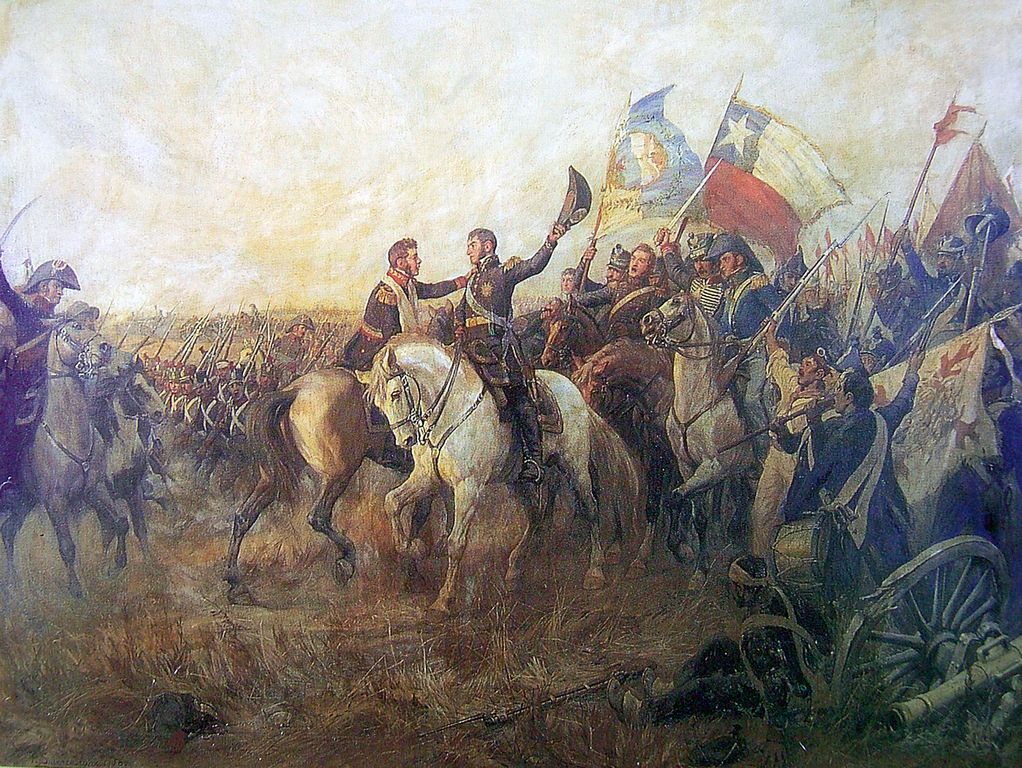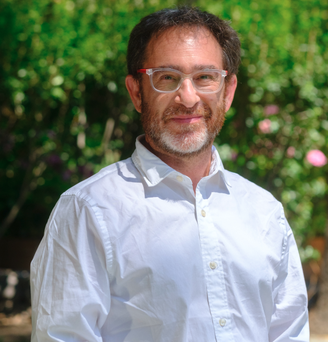|
Ex Embajada De Argentina En Chile
The Former Embassy of Argentina in Chile is a building located at 41 Vicuña Mackenna Avenue, near the Plaza Baquedano, in downtown Santiago, Chile, housing the General Consulate of Argentina in Santiago. It was declared as a List of National Monuments of Chile, National Monument of Chile on July 24, 2003, within the category of Historic Monuments. History On May 25, 1912, following a series of disagreements between Chile and Argentina, which concluded peacefully with the Abrazo del Estrecho (1899) and the Pacts of May, Pactos de Mayo (1902), the Chilean government granted a plot of land to Argentina as an act of reciprocity. It is located on Avenida Vicuña Mackenna, known then as ''Camino de Cintura''. Reciprocally, on September 18 of that year, Argentina granted to Chile a palace on Esmeralda Street in Buenos Aires. The location of the property was at what was then the edge of the city, and the property was close to the old Hospital de San Borja and the former Pirque railwa ... [...More Info...] [...Related Items...] OR: [Wikipedia] [Google] [Baidu] |
Mayor
In many countries, a mayor is the highest-ranking official in a municipal government such as that of a city or a town. Worldwide, there is a wide variance in local laws and customs regarding the powers and responsibilities of a mayor as well as the means by which a mayor is elected or otherwise mandated. Depending on the system chosen, a mayor may be the chief executive officer of the municipal government, may simply chair a multi-member governing body with little or no independent power, or may play a solely ceremonial role. A mayor's duties and responsibilities may be to appoint and oversee municipal managers and employees, provide basic governmental services to constituents, and execute the laws and ordinances passed by a municipal governing body (or mandated by a state, territorial or national governing body). Options for selection of a mayor include direct election by the public, or selection by an elected governing council or board. The term ''mayor'' shares a linguistic ... [...More Info...] [...Related Items...] OR: [Wikipedia] [Google] [Baidu] |
Argentina–Chile Relations
International relations International relations (IR), sometimes referred to as international studies and international affairs, is the scientific study of interactions between sovereign states. In a broader sense, it concerns all activities between states—such as ... between the Chile, Republic of Chile and the Argentina, Argentine Republic have existed for decades. The Argentina–Chile border, border between Argentina and Chile is the world's third-longest international border, which is long and runs from north to south along the Andes mountains. Although both countries gained their independence during the South American wars of liberation, during much of the 19th and the 20th century, relations between the countries were chilled as a result of Beagle conflict, disputes over the border in Patagonia. Despite this, Chile and Argentina have never been engaged in a war with each other. In recent years, relations have improved dramatically in spite of social differences. De ... [...More Info...] [...Related Items...] OR: [Wikipedia] [Google] [Baidu] |
Neoclassical Architecture In Chile
Neoclassical or neo-classical may refer to: * Neoclassicism or New Classicism, any of a number of movements in the fine arts, literature, theatre, music, language, and architecture beginning in the 17th century ** Neoclassical architecture, an architectural style of the 18th and 19th centuries ** Neoclassical sculpture, a sculptural style of the 18th and 19th centuries ** New Classical architecture, an overarching movement of contemporary classical architecture in the 21st century ** in linguistics, a word that is a recent construction from New Latin based on older, classical elements * Neoclassical ballet, a ballet style which uses traditional ballet vocabulary, but is generally more expansive than the classical structure allowed * The "Neo-classical period" of painter Pablo Picasso immediately following World War I * Neoclassical economics, a general approach in economics focusing on the determination of prices, outputs, and income distributions in markets through supply and dema ... [...More Info...] [...Related Items...] OR: [Wikipedia] [Google] [Baidu] |
Swimming Pool
A swimming pool, swimming bath, wading pool, paddling pool, or simply pool, is a structure designed to hold water to enable Human swimming, swimming or other leisure activities. Pools can be built into the ground (in-ground pools) or built above ground (as a freestanding construction or as part of a building or other larger structure), and may be found as a feature aboard ocean-liners and cruise ships. In-ground pools are most commonly constructed from materials such as concrete, natural stone, metal, plastic, or fiberglass, and can be of a custom size and shape or built to a standardized size, the largest of which is the Olympic-size swimming pool. Many health clubs, fitness centers, and private clubs have pools used mostly for exercise or recreation. It is common for municipalities of every size to provide pools for public use. Many of these municipal pools are outdoor pools but indoor pools can also be found in buildings such as natatoriums and leisure centers. Hotels may ... [...More Info...] [...Related Items...] OR: [Wikipedia] [Google] [Baidu] |
Beaux-Arts De Paris
The Beaux-Arts de Paris is a French ''grande école'' whose primary mission is to provide high-level arts education and training. This is classical and historical School of Fine Arts in France. The art school, which is part of the Paris Sciences et Lettres University, is located on two sites: Saint-Germain-des-Prés in Paris, and Saint-Ouen. The Parisian institution is made up of a complex of buildings located at 14 rue Bonaparte, between the quai Malaquais and the rue Bonaparte. This is in the heart of Saint-Germain-des-Prés, just across the Seine from the Louvre museum. The school was founded in 1648 by Charles Le Brun as the famed French academy ''Académie de peinture et de sculpture''. In 1793, at the height of the French Revolution, the institutes were suppressed. However, in 1817, following the Bourbon Restoration, it was revived under a changed name after merging with the Académie d'architecture. Held under the King's tutelage until 1863, an imperial decree on Novembe ... [...More Info...] [...Related Items...] OR: [Wikipedia] [Google] [Baidu] |
Neoclassical Architecture
Neoclassical architecture is an architectural style produced by the Neoclassical movement that began in the mid-18th century in Italy and France. It became one of the most prominent architectural styles in the Western world. The prevailing styles of architecture in most of Europe for the previous two centuries, Renaissance architecture and Baroque architecture, already represented partial revivals of the Classical architecture of ancient Rome and (much less) ancient Greek architecture, but the Neoclassical movement aimed to strip away the excesses of Late Baroque and return to a purer and more authentic classical style, adapted to modern purposes. The development of archaeology and published accurate records of surviving classical buildings was crucial in the emergence of Neoclassical architecture. In many countries, there was an initial wave essentially drawing on Roman architecture, followed, from about the start of the 19th century, by a second wave of Greek Revival architec ... [...More Info...] [...Related Items...] OR: [Wikipedia] [Google] [Baidu] |
Architect
An architect is a person who plans, designs and oversees the construction of buildings. To practice architecture means to provide services in connection with the design of buildings and the space within the site surrounding the buildings that have human occupancy or use as their principal purpose. Etymologically, the term architect derives from the Latin ''architectus'', which derives from the Greek (''arkhi-'', chief + ''tekton'', builder), i.e., chief builder. The professional requirements for architects vary from place to place. An architect's decisions affect public safety, and thus the architect must undergo specialized training consisting of advanced education and a ''practicum'' (or internship) for practical experience to earn a Occupational licensing, license to practice architecture. Practical, technical, and academic requirements for becoming an architect vary by jurisdiction, though the formal study of architecture in academic institutions has played a pivotal role in ... [...More Info...] [...Related Items...] OR: [Wikipedia] [Google] [Baidu] |
Architectural Design Competition
An architectural design competition is a type of design competition in which an organization that intends on constructing a new building invites architects to submit design proposals. The winning design is usually chosen by an independent panel of design professionals and stakeholders (such as government and local representatives). This procedure is often used to generate new ideas for building design, to stimulate public debate, generate publicity for the project, and allow emerging designers the opportunity to gain exposure. Architecture competitions are often used to award commissions for public buildings: in some countries rules for tendering public building contracts stipulate some form of mandatory open architectural competition. [...More Info...] [...Related Items...] OR: [Wikipedia] [Google] [Baidu] |
Ministry Of Public Works (Chile)
The Ministry of Public Works ( es, Ministerio de Obras Públicas, links=no) is the cabinet-level administrative office in charge of "planning, directing, controlling and building the public infrastructure, as well as the conservation and management of them" within Chile. It is also responsible for the "management, distribution, use and conservation" of all the water resources within the country. They answer directly to the President of Chile. Since 11 March 2022, the Minister of Public Works is Mr. Juan Carlos García Pérez de Arce. History The office was first created by law of 21 June 1887, under President José Manuel Balmaceda as the ''Ministry of Industry and Public Works''. Since then it has undergone several reorganizations during its history, reflected in its different names: *Ministry of Industry and Public Works 21 June 1887 - 20 May 1910 *Ministry of Industry, Public Works and Railroads 20 May 1910 - 19 December 1924 *Ministry of Public Works and Roads 19 December 1 ... [...More Info...] [...Related Items...] OR: [Wikipedia] [Google] [Baidu] |
Edificio José Miguel Carrera
The Edificio José Miguel Carrera is the headquarters of the Ministerio de Relaciones Exteriores of Chile, located in the Civic District of Santiago, facing the Plaza de la Constitución. It was formerly the historic Hotel Carrera, until 2004. History The Hotel Carrera was designed in the Art Deco style by architects Josué Smith Solar and José Smith Miller, as part of the creation of a Civic District centered around La Moneda Palace. Opened in 1940, it was one of the first multi-story buildings constructed from reinforced concrete in Chile. The 17-story hotel had two basement levels and a rooftop swimming pool for the guests, among them the most notable being Elizabeth II and Pope John Paul II. Intercontinental Hotels managed the hotel from January 1, 1950 to 1960. Hilton Hotels leased the hotel on January 1, 1961, and it became their first property in South America. Sheraton Hotels assumed management of the property in 1969, and operated it until 1978 as the Carerra-Sheraton ... [...More Info...] [...Related Items...] OR: [Wikipedia] [Google] [Baidu] |
Palacio Cousiño
The Palacio Cousiño is a palace that was designed and built for Isidora Goyenechea, widow of Luis Cousiño, who in turn was son of Matías Cousiño. It is located at 438 Dieciocho Street in Santiago, Chile. The palace was designed by architect Paul Lathoud, who also designed the building housing the Chilean National Museum of Natural History. The palace was constructed in Second Empire Style Second Empire style, also known as the Napoleon III style, is a highly eclectic style of architecture and decorative arts, which uses elements of many different historical styles, and also made innovative use of modern materials, such as i ... and completed in 1878. References {{DEFAULTSORT:Palacio Cousino Buildings and structures in Santiago Houses completed in 1878 National Monuments of Chile ... [...More Info...] [...Related Items...] OR: [Wikipedia] [Google] [Baidu] |





_-_facade_on_Piazza_dei_signori.jpg)


